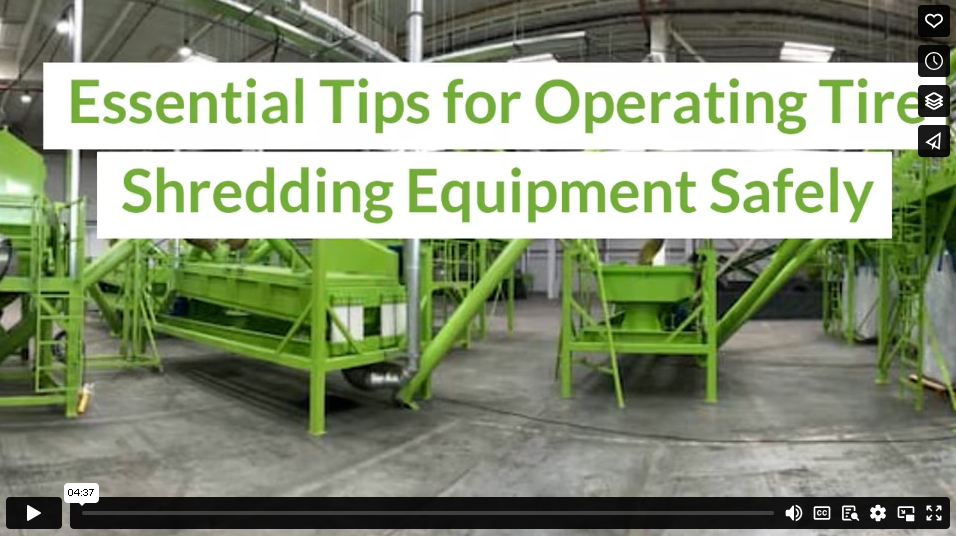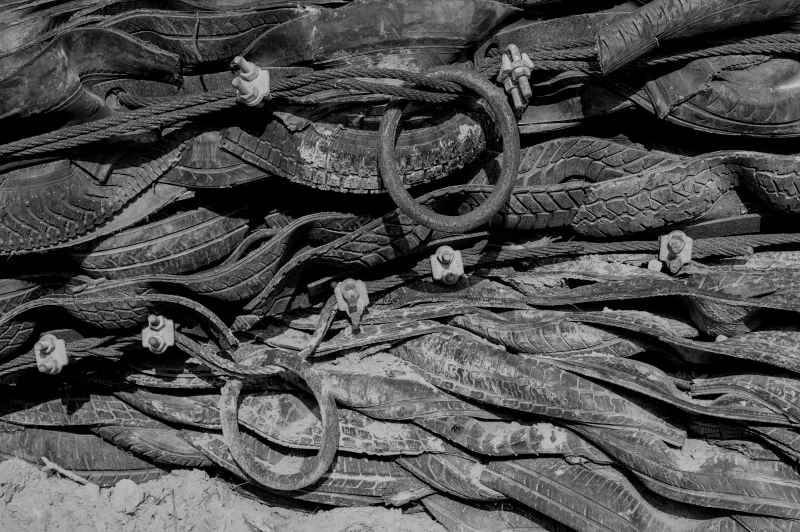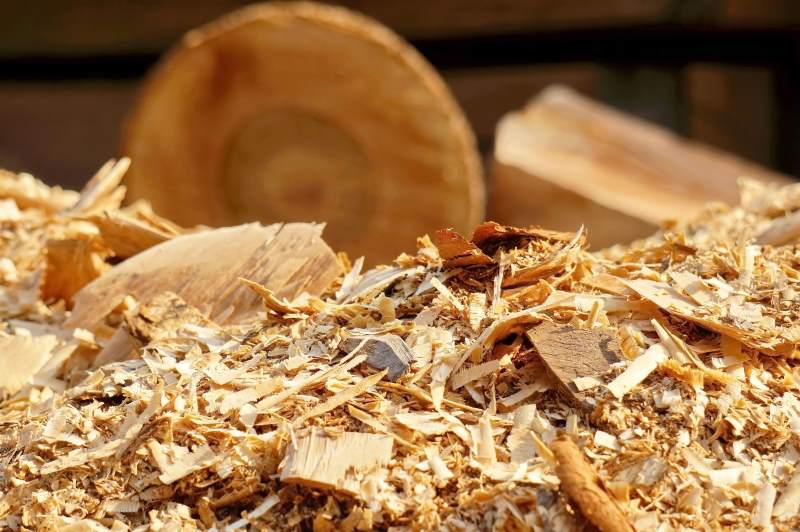Tire shredding equipment is the next frontier in responsible tire disposal, opening new doors in rubber recycling and waste management. This machinery keeps tires from filling our landfills and instead allows them to be repurposed into other useful materials.
When operating heavy machinery with as many blades as tire shredders have, safety is of the utmost importance. A machine that can quickly slice through rubber and even remove steel is highly powerful and needs to be handled with extreme care.
If you’re operating tire shredders, make sure you know the safety procedures and guidelines very well, and if you lead a team that works with this equipment, train them extensively on the machinery. Here are some pointers for you and your team to operate tire shredding equipment safely and efficiently.
Understand the Tire Shredding Equipment
It’s important to have a solid understanding of how the equipment works and the different types available before operating tire shredding machinery.
Tire shredders are powerful machines that break down large tires into smaller, manageable pieces for recycling or disposal. They typically consist of rotating blades that cut through the rubber, reducing tires to shreds of varying sizes.
There are several types of tire recycling equipment, each serving different purposes, including shredders, granulators, and powder machines. You can learn more about these revolutionary technologies HERE.
Pre-Operation Safety Checks
Before you power on a tire shredding machine, conduct a thorough inspection first. Make sure that all safety guards are securely in place and confirm that no one is in the immediate area. Additionally, check that the blades, belts, and electrical connections are all in working order.
Conducting a detailed inspection before each use is vital for preventing accidents and equipment malfunctions. By identifying and addressing any potential issues early on, you reduce the risk of costly downtime, prioritize the safety of the operators, and likely extend the life of your machinery.
Personal Protective Equipment
While operating tire recycling equipment, it’s crucial to wear the proper personal protective equipment (PPE). PPE acts as a barrier between you and the hazards of the job, significantly reducing the risk of serious injuries. The recommended PPE for operating shredding equipment includes, but is not limited to:
- Gloves: Protect hands from cuts and abrasions.
- Safety Glasses: Shield eyes from debris and potential impact.
- Ear Protection: Prevents hearing loss from prolonged exposure to loud machinery.
- Steel-Toed Boots: Safeguard feet from heavy objects and potential crushing injuries.
Safe Operating Practices
To ensure safety while operating tire shredding equipment, it’s important to follow proper procedures. Feed tires one at a time, using the designated tools to guide them. Never use your hands to push tires into the shredder. Always keep a safe distance from the shredder’s intake area.
When starting the equipment, allow it to reach its full operating speed before beginning to feed any tires into it. When you stop the equipment, gradually reduce the rate and then power it down.
Maintenance and Troubleshooting
As they say, “An ounce of prevention is worth a pound of cure.” Properly maintaining your tire shredding equipment can prevent much bigger problems down the road.
A good mechanic can be your best ally. Regular inspections and timely repairs are essential for both safety and efficiency. Well-maintained machinery not only works more reliably but also helps you get the job done faster.
Tips for Handling Common Issues Safely:
- Jams: Always power down the machine entirely before attempting to clear a jam. Use proper tools to remove debris, and never reach into the shredder while it’s still connected to power.
- Mechanical Failures: If you hear unusual noises or notice issues, stop the machine immediately. Inspect the equipment for loose or worn parts or leaks, and consult a professional if needed.
Emergency Procedures
Emergencies can happen unexpectedly, so it’s vital to be prepared. Whether dealing with equipment malfunctions or injuries, knowing how to respond is critical.
Familiarize yourself with the location and function of all off switches, emergency stop buttons, and override mechanisms on your tire shredding equipment. Quick access to these controls can prevent an accident from worsening. Ensure all operators are trained to use those features and know how to shut down the system safely in an emergency.
First aid kits and fire extinguishers should be kept nearby, and all operators should know basic first aid. Quick action and effective communication can make all the difference in an emergency situation.
By taking these precautions seriously, you not only protect yourself and your team but also extend the life of your equipment, making your tire recycling operations both safe and successful. Proper knowledge of equipment, adherence to safety protocols, and regular maintenance are not just best practices—they are essential for preventing costly accidents. This helps you create a safer work environment and increase overall productivity.
As you consider how your team operates tire shredding equipment, review your current safety practices and schedule a thorough inspection of your equipment. Make safety a top priority, and you can realize the benefits of a well-maintained and efficiently run operation.
Video





